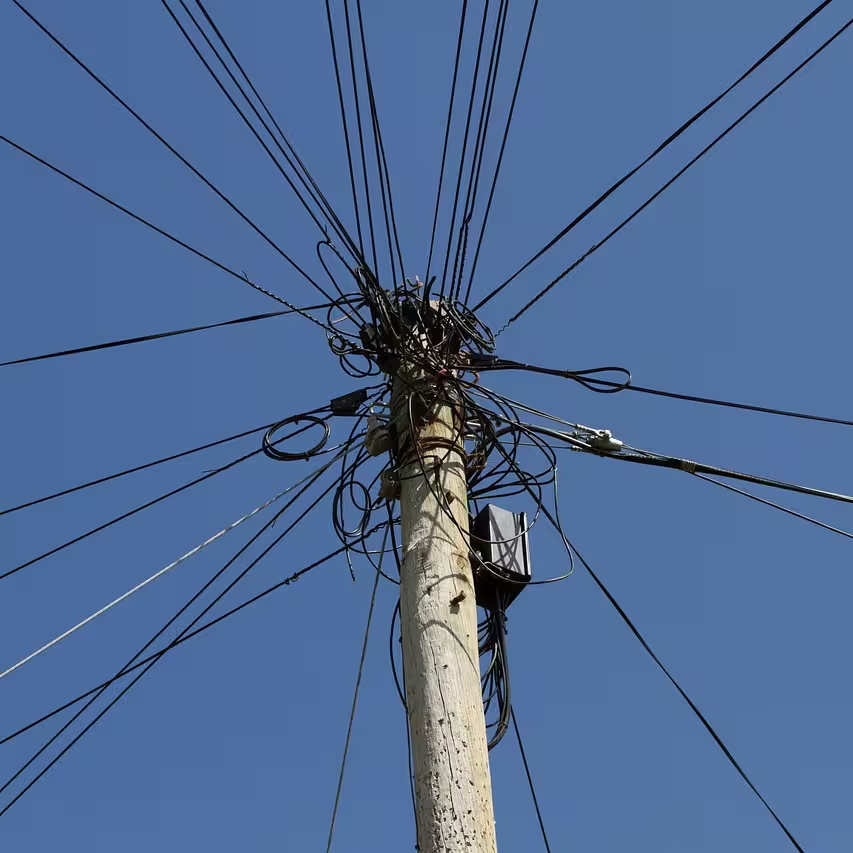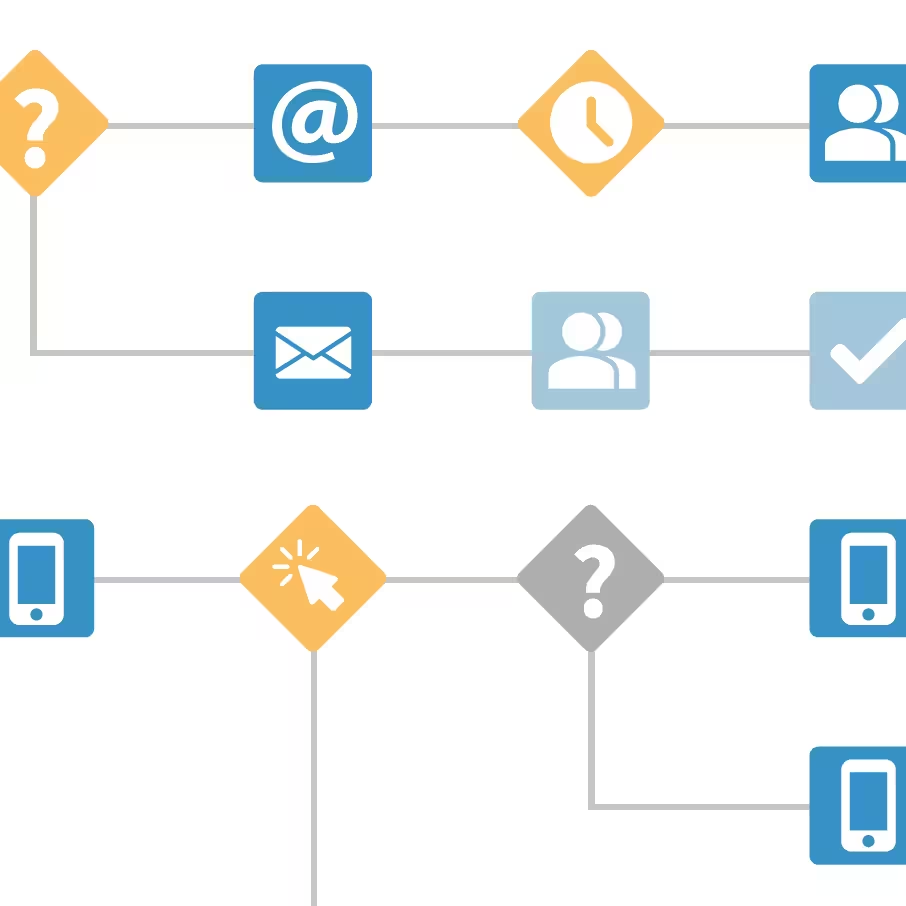Which email campaign types should you rely on?
Shopping cart abandonment emails should increase sales many times over. Welcome routes should measurably strengthen customer loyalty and generate X times more initial purchases than one-off welcome emails. These and similar statements come from all sides from email service providers and marketing consultants.
In our experience, marketing emails that are adapted to the customer journey and are highly personalized through automation can actually be extremely effective. They also make everyday work easier, because after the initial initial effort, they largely run by themselves — apart from necessary updates in terms of content or design. While automations continuously generate traffic and conversions, more time can be invested in developing and optimizing new campaigns.

Experienced marketers report on what is actually worthwhile in email marketing and what they can do without.
But which email campaign types should you rely on when budgets are tight and resources are limited? Which tactics promise the greatest success in moving away from classic “watering can marketing” and offering customers personalized experiences? To find out, we conducted a qualitative survey of our B2C customers. In conversation, companies with well-known brands from various industries told us which automations effectively support their email marketing and which ultimately proved to be inefficient. We used the following list of email campaign types as a basis for discussion:
- Welcome route
- Shopping cart abandonment emails
- Personalized after-sales routes
- reactivation campaigns
- Birthday emails & anniversary emails
- Upselling campaigns
- cross-selling campaigns
- Wish lists & search order notifications
- Discounts & special promotions
The companies we surveyed used most — if not all — mentioned campaign types and are therefore particularly good at making statements about their effectiveness. Even though all companies ultimately aim to increase their turnover, they set different priorities. Based on these focal areas, we have summarized the results in three profiles.
Group 1: The relationship carers
We asked our customers which email automation they would use first if they had to start all over again. The so-called relationship maintainers mentioned above all the welcome route, the first component in the customer journey after signing up for a newsletter.
In order not to work things up from behind, you should start where email communication with customers also begins chronologically: “We have implemented the most important campaigns in the life cycle one by one,” said a representative from the bookstore. “In terms of impact, the welcome route also generates the most revenue for us.”
Other companies consider the welcome route for building relationships with subscribers to be particularly important. “The welcome route is the first contact once I've signed up for the newsletter,” explains a marketer from the fashion industry. “This is where we establish the first contact between customers and the web shop directly. If customers also receive a welcome voucher, then we directly gain a user in the web shop and are directly involved in the purchase cycle.”
As advice for marketers who are just starting to build automation, one interviewee said:
“Look at your customer's life cycle, create a good database and then look at what you want to address with your customers. And that's after the welcome route, because you'll do it anyway.”
Group 2: The conversion maximizers
Other marketers place buying-related communication at the center of their strategy. All email marketing professionals we spoke to agree: Many automations work together to achieve the goal. The so-called conversion maximizers see shopping cart abandonment emails as the strongest tool in particular.
“I would set up shopping cart abandonment emails first. This is a good way to generate a purchase. The last hurdle before making a purchase is overcome by reminding the customer again,” confirms a representative from the DIY industry.
Despite the high implementation costs, this automation is also highly appreciated in the fashion sector: “Shopping cart abandonment is very time-consuming, but it was worth it for us,” they say.
In general, the effort involved in designing and creating email automations should not be underestimated. One marketer says: “Once they're set up, the effort isn't that high, but finding a place in product development to set up automation is very difficult for us. Data protection also often gets in the way. [...] If the rules there are constantly changing, it makes the whole thing more technically complex. But once it's up and running, it's worth it and the ongoing effort isn't very high.”
“It's a marathon, you should never stop running.”
Even when the automations are running, you shouldn't lose sight of their performance. There is always something to optimize. However, it is not always necessary to develop a completely new route, but existing processes can also be improved through minor adjustments and frequent A/B tests.
Group 3: The quick starters
Who doesn't like reaching for the proverbial “low-hanging fruit”? This group of marketers is primarily looking at what can be set up quickly and without high costs, and then optimize more and add automations later.
“Even the smallest optimization can generate a lot of revenue.”
A marketer from retail therefore recommends testing many variables in all campaign types and refining the basic KPIs in small steps. As always, the focus here is on conversions, but the way to get there is through the open and click rates of email campaigns, which ultimately increase website traffic. It is important that the click rate is more important than the open rate, because it is ultimately the clicks that increase traffic on the company website and thus the chance of a deal.
Another contact person emphasized that using existing contacts from CRM and setting up new types of automation is faster and less cost-intensive than reaching out to “completely new” target groups. Automation must also deliver good results. A/B tests are the be-all and end-all here; direct performance measurement is useful within just one week with very high website traffic. If the number of website visitors is lower, a longer period of time is required.
A third representative added: “We have a very strong focus on revenue via email, because email is quite cheap compared to other channels. It works very, very well and it will also be a focus for us next year.” She explained the importance of generating measurable success quickly as follows: “Our email content encourages customers to do it themselves and sustainability is a big issue, but we also have very tough sales targets for our emails.”
Conclusion
Regardless of the corporate strategy, all our interlocutors agreed that a combination of many automations in the email sector is very worthwhile. When asked which methods would no longer be used in the future, a contact person simply mentioned the anniversary campaign, which was “unnecessary as things stand.” Elsewhere, up-selling and cross-selling were described as not very worthwhile. One marketer, on the other hand, answered: “No, all [email automations] are relevant. Everyone has their right.”
When asked which methods from our list a company should try, one interviewee said: “Every automation deserves an opportunity. Whether it's worth it or not will only be seen later.” Even if automation requires maintenance, that is okay in view of the potential added value. The assessments here were generally positive.
When automation pays off has been assessed differently, but sometimes it takes longer than you think. “A colleague of ours from Business Analytics said that six months to a year of data must be collected and imported to make things run smoothly. Depending on how much the team costs, it takes a few months, half a year, or even a year.” For other companies, however, the measures paid off after just two weeks. Whether you need to plan for the long or short term apparently depends on the volume and structure of customer communication.
A central point of automations is that they take place in a personalized way, because this is the quickest way to say goodbye to the “spray & pray” method and enter into communication that meets the needs of customers. “The best way to build these automations is with individual offers,” one marketer agreed with us.
Overall, the companies we surveyed no longer want to miss their automated email marketing. The selling points of providers therefore do not seem to be entirely out of thin air. Automations should continue to play a major role in the future. “We have already planned exciting things, such as integrating the entire life cycle,” said a marketer from the DIY sector. “What we have now is only a fraction of what is possible. That will definitely grow in the future.” And a contact person from the retail sector concluded with the statement:
“Email isn't dead. And it won't be dead in three years, but will continue to be relevant. We can see this in customers and opening rates.”















